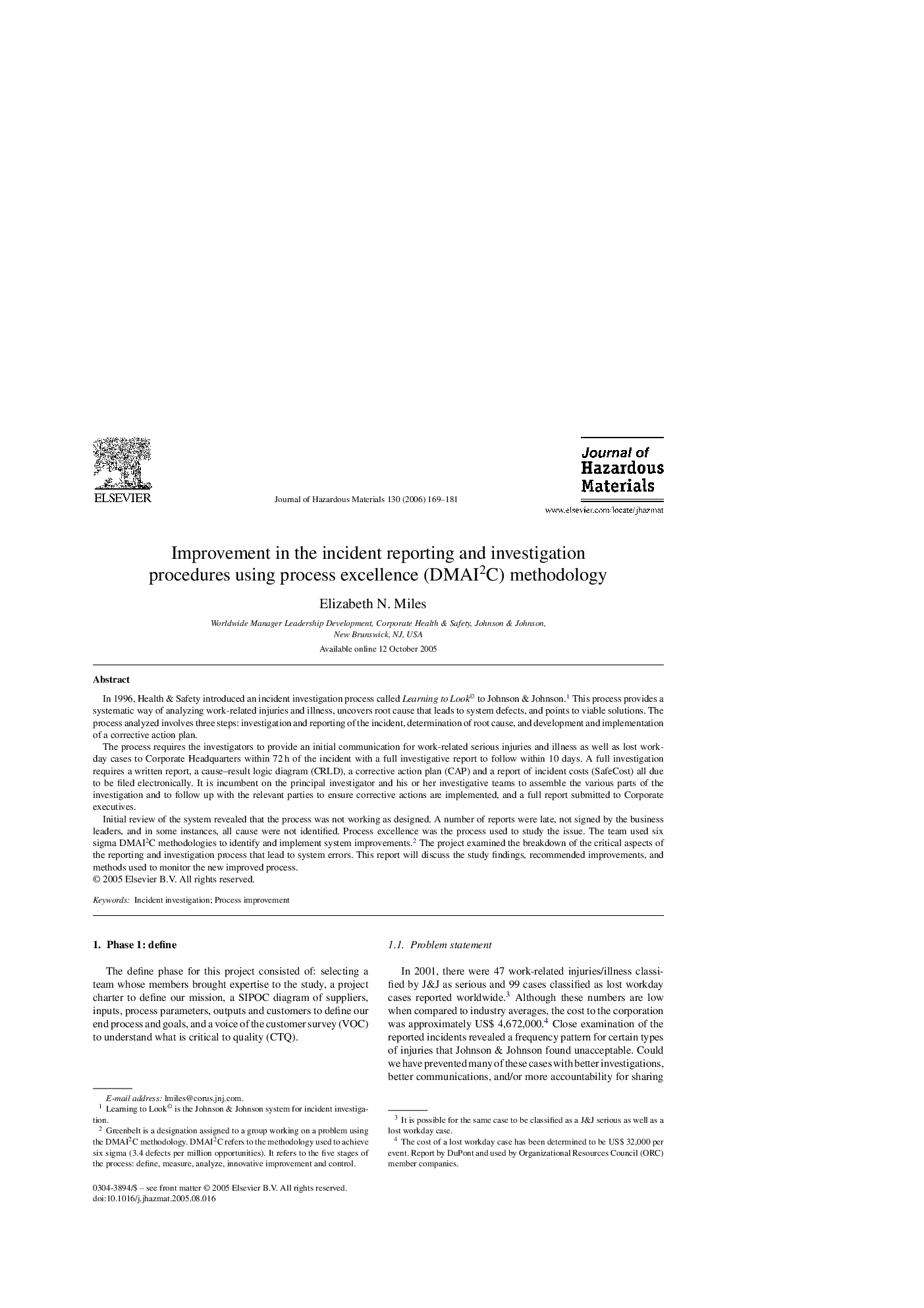| Article ID | Journal | Published Year | Pages | File Type |
|---|---|---|---|---|
| 585902 | Journal of Hazardous Materials | 2006 | 13 Pages |
In 1996, Health & Safety introduced an incident investigation process called Learning to Look© to Johnson & Johnson.1 This process provides a systematic way of analyzing work-related injuries and illness, uncovers root cause that leads to system defects, and points to viable solutions. The process analyzed involves three steps: investigation and reporting of the incident, determination of root cause, and development and implementation of a corrective action plan.The process requires the investigators to provide an initial communication for work-related serious injuries and illness as well as lost workday cases to Corporate Headquarters within 72 h of the incident with a full investigative report to follow within 10 days. A full investigation requires a written report, a cause–result logic diagram (CRLD), a corrective action plan (CAP) and a report of incident costs (SafeCost) all due to be filed electronically. It is incumbent on the principal investigator and his or her investigative teams to assemble the various parts of the investigation and to follow up with the relevant parties to ensure corrective actions are implemented, and a full report submitted to Corporate executives.Initial review of the system revealed that the process was not working as designed. A number of reports were late, not signed by the business leaders, and in some instances, all cause were not identified. Process excellence was the process used to study the issue. The team used six sigma DMAI2C methodologies to identify and implement system improvements.2 The project examined the breakdown of the critical aspects of the reporting and investigation process that lead to system errors. This report will discuss the study findings, recommended improvements, and methods used to monitor the new improved process.
